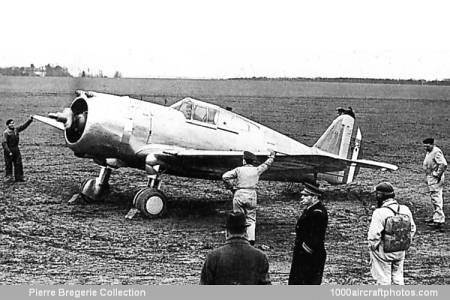01/31/2012. After the US Government had ordered the P-36A, Curtiss was permitted to sell equivalent models to France and later to Norway and the Netherlands. Nearly 200 served as the most effective French fighter until the fall of France in June 1940. Other Model 75s en route were diverted to Loyalist French ports and to French Africa. Britain took over the French Model 75s still in the factory plus some French escapees and named them Mohawk. While the RAF made little combat use of its Mohawks, many were reassigned to other nations and did well in less active war theatres.
The Model 75 fought on both sides. The Germans captured some still in their shipping crates in France and Norway and sold them to Finland, which used them against the Russians. Other Model 75s in Vichy-controlled French North Africa fought briefly against US forces during the Allied landings there. Curtiss also developed a simplified version with non-retractable landing gear for sale to lesser powers and did a brisk export business in all Model 75 variants. Licenses to manufacture these were given to Argentina and China.
The H75-A was the principal export version of the Model 75, which used several variants of both Wright Cyclone and Pratt & Whitney Twin Wasp engines. The H75-A was generally inferior in speed and armor to the German Messerschmitt Bf l09 that was its principal adversary, but it was superior in maneuverability and the rugged airframe could absorb terrific punishment. Firepower was weak by European standards, with only two synchronized machine guns in the nose and two in the wings. Although approaching obsolescence when it entered combat, the H75-A gave an excellent account of itself in the hands of dedicated pilots.
The first French order was for 100 aircraft of the model H75-A1 (c/n 12798 to 12897), these were powered by an 1,050 hp Pratt & Whitney R-1830-SC3G engine, and deliveries to France started in December 1938. France used the manufacturer's model designation and numbered the aircraft consecutively within the model. This information appeared in three lines on the rudder as: CURTISS H75-C1 No. 4. The C stood for Chasse (pursuit), and the 1 indicated a single-seater; 4 was the fourth H75 ordered by France. Although the H75As were delivered in natural metal finish and had French insignia applied at the factory, markings were modified and camouflage paint applied after arrival in France.
It is interesting to note that the throttles of French military aircraft operated in the reverse of the accepted standard; forward movement reduced power, and the French 75s were so equipped. Instrumentation and the four 0.295 in (7.5 mm) machine guns were French. After the fall of France, some H75-A1s made it to England and entered the RAF as Mohawk Mk.Is.
The second French order was for 100 H75-A2s (c/n 12932 to 13031), deliveries started in May 1939. These had two additional wing guns and the 1,050 hp R-1830-S1C3G engine, which made them more like the USAAC
P-36D. French AF numbering continued from the H75-A1, the first H75-A2 being numbered 101. Some of these also reached Britain and became Mohawk Mk.IIs. Mohawk Mk.Is and Mohawk Mk.IIs were mixed in the RAF serial number blocks AX880 to AX898, BJ876 to BJ878, RK876 to RK879, and BL220 to BL223.
